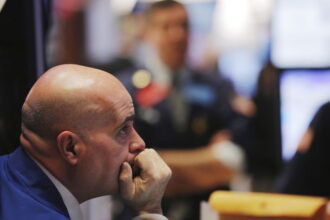By Peter Nurse
Investing.com — Oil prices traded higher Thursday, near two-week highs, after a surprise drop in U.S. crude stocks and as supply disruptions persist.
By 09:00 ET (13:00 GMT), futures traded 0.7% higher at $73.47 a barrel, while the contract rose 0.6% to $78.00 a barrel.
The market continues to be supported by a shortfall of Iraqi exports from the Turkish port of Ceyhan following a legal dispute, depriving the global market of roughly 400,000 barrels of oil per day.
“The standoff with Kurdish oil flows via Turkey continues and the halting of pipeline flows has meant that producers in the Kurdish region have had to start reducing output,” said analysts at ING, in a note. “Producer DNO has said it has started an orderly shutdown of its fields in the region.”
This has meant that the global market basically remains in deficit even after Reuters reported that Russia didn’t cut its oil production as much as it threatened over the last month, putting the actual decline in output at 300,000 barrels a day, rather than the announced 500,000 b/d.
Additionally, U.S. crude oil stockpiles fell unexpectedly in the week to March 24, with the recording a 7.5-million-barrel drop in crude inventories to a two-year low, the largest draw in commercial inventories since November and only the second decline in stocks so far this year.
“The draw was driven largely by a fall in imports,” ING added, “with crude oil imports falling by 847Mbbls/d WoW. Exports remained above 4MMbbls/d over the week.”
Still, both crude benchmarks remain over 8% lower year-to-date, as a great deal of uncertainty exists on both sides of the demand/supply equation.
With both the and the , and the for that matter, expected to raise interest rates at least one more time this year, demand from the Western economic powerhouses could be stunted this year.
A lot seems to be resting on China’s economic recovery in terms of demand growth, and this means Friday’s data will be closely watched as market watchers try to gauge the strength of the recovery in the world’s second largest economy in the wake of the lifting of pandemic restrictions.
Additionally, the Organization of the Petroleum Exporting Countries and allies, including Russia, a group known as OPEC+, is set to hold a policy meeting at the beginning of April.
The producer group is not expected to agree to another output cut beyond the 2M barrels per day it announced in November, but its views on how it sees the market going forward could alter perceptions.
Read the full article here










